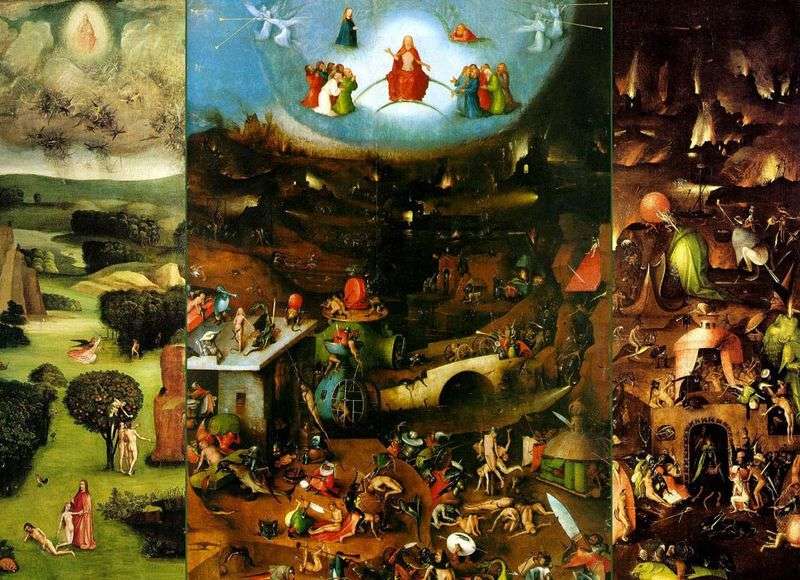
The Last Judgment was written by Fra Angelico in the early 1430s. for the church of Santa Maria della Angeli in Florence. The prospect of two rows of empty graves leaving for the dark sky creates a dramatic effect of space and a premonition. In the center, surrounded by angels, we see Christ as the judge, the Holy Virgin and the Holy Ghost. John in his traditional places – on either side of him. Below them, two crowds – the blessed and the damned – have already taken their places. The angels gathered to take the souls of the blessed to heaven, this symbolizes their dance in the background of a paradise landscape. Opposite them are depicted the damned, fighting in horror from the demons, dragging them to the eternal torments of Hell.
TERRIBLE COURT. The scriptures prophesy that all will appear before Christ, and he “will separate them from the others as a shepherd separates the sheep [believers] from the goats [unbelievers], and sets the sheep on his right side, and the goats on the left.” In the churches of the late Middle Ages and Renaissance, the Last Judgment was traditionally portrayed on the wall at the western entrance or next to as a reminder of a bygone flock. Christ leads the congregation as a judge, sitting on a throne surrounded by apostles. Close to him may be the Virgin Mary as intercessor, St. Peter with the keys of heaven and the angels with instruments of the Passion of Christ. Above Christ, the ranks of angels or saints are depicted, and below him, Michael holds the scales on which human souls are weighed. The angels trumpet the trumpets, summoning the dead.
In the lower part of such a composition there can be open graves to release the souls of the dead, at the right hand of Christ the blessed soar in a circular motion clockwise. On the left hand of Christ, the unbelievers are sent to Hell. In Hell, Satan devours and ejaculates sinners, while they are tormented and tortured in accordance with the prescribed punishment. The Last Judgment of Michelangelo, contrary to tradition, is located on the zaaltar wall. Perhaps this was done to prevent those who challenged the supremacy of the Pope after the Reformation. Here, Christ ceases to be a passive figure: before us is the image of an angry Christ who, with one awful movement of his hand, sweeps mankind into hell. This is a day of anger, not a day of pity, and the justice of this heavenly judgment is the inexorable severity of God.
 The Last Judgment by Angelico Fra
The Last Judgment by Angelico Fra Coronation of the Virgin Mary by Fra Beato Angelico
Coronation of the Virgin Mary by Fra Beato Angelico Annunciation by Fra Beato Angelico
Annunciation by Fra Beato Angelico The Last Judgment by Hieronymus Bosch
The Last Judgment by Hieronymus Bosch Hell. The right shutter of the altar The Last Judgment by Hieronymus Bosch
Hell. The right shutter of the altar The Last Judgment by Hieronymus Bosch St. Peter, dictating the Gospel to St. Mark by Fra Beato Angelico
St. Peter, dictating the Gospel to St. Mark by Fra Beato Angelico Transfiguration of Our Lord by Fra Beato Angelico
Transfiguration of Our Lord by Fra Beato Angelico Altar of San Marco by Fra Beato Angelico
Altar of San Marco by Fra Beato Angelico